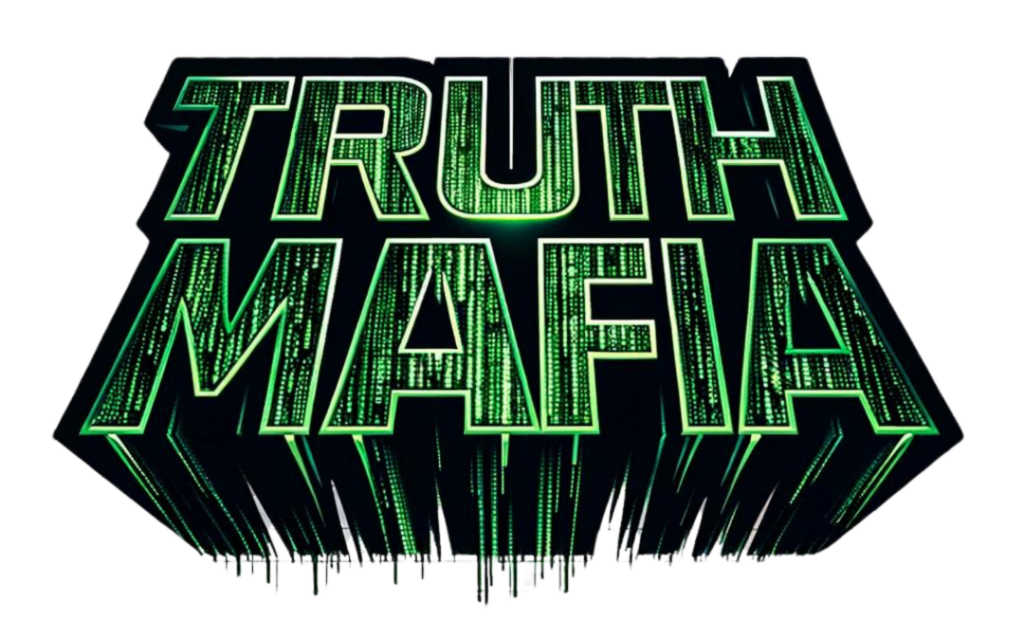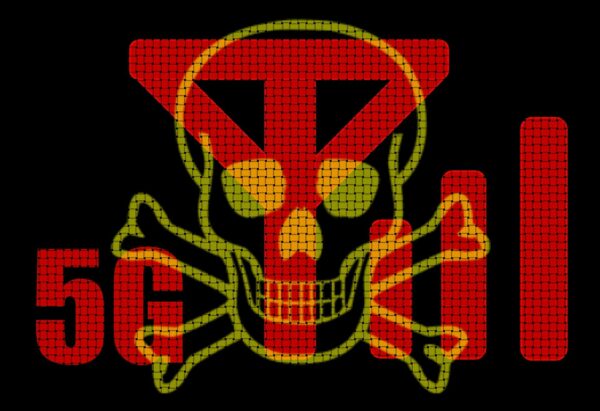
📰 Stay Informed with Truth Mafia!
💥 Subscribe to the Newsletter Today: TruthMafia.com/Free-Newsletter
🌍 My father and I created a powerful new community built exclusively for First Player Characters like you.
Imagine what could happen if even a few hundred thousand of us focused our energy on the same mission. We could literally change the world.
This is your moment to decide if you’re ready to step into your power, claim your role in this simulation, and align with others on the same path of truth, awakening, and purpose.
✨ Join our new platform now—it’s 100% FREE and only takes a few seconds to sign up:
We’re building something bigger than any system they’ve used to keep us divided. Let’s rise—together.
💬 Once you’re in, drop a comment, share this link with others on your frequency, and let’s start rewriting the code of this reality.
🌟 Join Our Patriot Movements!
🤝 Connect with Patriots for FREE: PatriotsClub.com
🚔 Support Constitutional Sheriffs: Learn More at CSPOA.org
❤️ Support Truth Mafia by Supporting Our Sponsors
🚀 Reclaim Your Health: Visit iWantMyHealthBack.com
🛡️ Protect Against 5G & EMF Radiation: Learn More at BodyAlign.com
🔒 Secure Your Assets with Precious Metals: Get Your Free Kit at BestSilverGold.com
💡 Boost Your Business with AI: Start Now at MastermindWebinars.com
🔔 Follow Truth Mafia Everywhere
🎙️ Sovereign Radio: SovereignRadio.com/TruthMafia
🎥 Rumble: Rumble.com/c/TruthmafiaTV
📘 Facebook: Facebook.com/TruthMafiaPodcast
📸 Instagram: Instagram.com/TruthMafiaPodcast
✖️ X (formerly Twitter): X.com/Truth__Mafia
📩 Telegram: t.me/Truth_Mafia
🗣️ Truth Social: TruthSocial.com/@truth_mafia
🔔 TOMMY TRUTHFUL SOCIAL MEDIA
📸 Instagram: Instagram.com/TommyTruthfulTV
▶️ YouTube: YouTube.com/@TommyTruthfultv
✉️ Telegram: T.me/TommyTruthful
🔮 GEMATRIA FPC/NPC DECODE! $33 🔮
Find Your Source Code in the Simulation with a Gematria Decode. Are you a First Player Character in control of your destiny, or are you trapped in the Saturn-Moon Matrix? Discover your unique source code for just $33! 💵
Book our Gematria Decode VIA This Link Below: TruthMafia.com/Gematria-Decode
💯 BECOME A TRUTH MAFIA MADE MEMBER 💯
Made Members Receive Full Access To Our Exclusive Members-Only Content Created By Tommy Truthful ✴️
Click On The Following Link To Become A Made Member!: truthmafia.com/jointhemob
Summary
Transcript
For example, in a factory setting, Atlas can detect large shelving units that store automotive parts, which are known as fixtures. But these fixtures vary in shape and size, and Atlas’ system classifies them while pinpointing their corners as key points. And these key points come in two types specifically, the first being outer key points and the second being inner key points. And by using a lightweight neural network, Atlas achieves real-time perception without sacrificing accuracy, which lets it navigate crowded factory floors with more agility than before. And this leads to feature number 4, which is its 3D fixture localization.
So to handle objects inside of a fixture, Atlas needs to know exactly where it is in relation to that fixture. And it does this with a smart system that figures out how its position and angle compare to nearby fixtures. This system uses special points called key points from the 2D object detection process, and these key points are matched with a model of how the fixture should look in space, ensuring everything lines up accurately. Plus, Atlas also uses data about its own movements to keep its position estimates steady, even if some key points are unclear or noisy.
And a big challenge is in dealing with key points that are hidden or out of sight, like when Atlas is too close to a fixture or looking at it from a tricky angle. And to solve this, Atlas focuses on inner key points, such as the corners of shelves or slots, which are key for tasks like placing or grabbing objects. And this creates a puzzle, which is figuring out which 2D key points in the camera image match the 3D corners in the camera image. When Atlas starts by using outer key points to make a rough guess, then it refines it with inner key points for a precise understanding of the fixture and its slots.
And in factory settings, where many fixtures look identical, Atlas keeps things straight by tracking changes over time, and uses clues about where fixtures should be, like expecting one fixture to be half a meter from another. For example, in a demo video, when someone moves a fixture behind Atlas, the robot quickly spots the change, updates its map, and adjusts its actions. And it’s this flexibility and accuracy that makes Atlas’s 3D localization system a key part of its working in ever-changing environments. But now, on to feature number 3, its object pose estimation using SuperTracker to master object handling.
So Atlas’s ability to pick up and place objects with incredible precision actually comes from its SuperTracker system, which combines information from its movements, cameras, and sometimes force feedback to track objects in real time. And by using data from its joint encoders, Atlas knows exactly where its grippers are in 3D space. And when it grabs an object, this data helps predict where the object should be as the Atlas moves, even if the object is hidden or out of the camera’s view, which is a common issue in busy factory settings. Plus, this also lets Atlas notice if an object slips from its grip so it can quickly fix the mistake.
And when the object is visible, SuperTracker uses a clever model that compares camera angles to a digital version of the object trained on tons of virtual data. Then this model can work with new objects using just a 3D design file, either by refining a starting guess of the object’s position or by creating multiple guesses from a 2D outline, and then picking the one that’s best. On top of this, Boston Dynamics has built detailed digital models of hundreds of factory objects, and in tough situations like when objects are partially hidden or poorly lit, SuperTracker even uses checks to ensure further accuracy by testing multiple positions to find one that matches consistently while rejecting guesses where the objects are too far from the grippers.
Then it processes the robot’s movement data with its slower camera data together, using a special tool to create a smooth, accurate 3D path for the object. And this allows Atlas to handle complex tasks like placing parts with pinpoint accuracy, but none of this is possible without feature 2, Atlas’s hand-eye calibration. So when it comes to precision tasks like inserting a part into a slot that requires flawless coordination between what Atlas sees and how it moves, it’s achieved through a meticulous hand-eye calibration system, which ensures that Atlas’s internal model of its body aligns perfectly with its camera feed.
And this calibration compensates for manufacturing imperfections, physical wear, and environmental factors like temperature changes. And the resulting system allows the robot to place parts with sub-centimeter accuracy, and this is critical for tasks where even slight misalignments could lead to failures. And this brings us to feature number one, adaptive error correction for learning from its mistakes. And that’s because Atlas’s vision system isn’t just about executing tasks, but instead it’s about adapting when things go wrong. So if an insertion fails or a part is dropped, Atlas can detect the error, locate the fallen object, and then retry the task seamlessly.
And this adaptability stems from its foundation vision model, which is conditioned on factory-specific parts, and it leverages Atlas’s wide range of motion. And by combining robust state estimation with real-time perception, Atlas can adjust its actions dynamically to make it more resilient in unpredictable environments. And these five features are coming together in Atlas’s upgraded vision system as a leap towards what’s called athletic intelligence, where perception and action are intertwined, allowing robots to move and think with human-like agility. The 2D object detection and 3D localization systems provide a comprehensive understanding of the environment, while the error correction adds resilience, making Atlas a reliable partner in dynamic settings.
So together, these advancements enable Atlas to tackle the geometric and semantic complexities of the real world, from factory floors to potential household applications. And this is all as Boston Dynamics is pushing towards a unified foundation model, where they’re blurring the line between perception and action, and bringing us closer to a future where humanoid robots are not just tools, but intuitive collaborators. As for the future, Boston Dynamics is teaching Atlas not only to see, but also to analyze its surroundings with the ability to instinctively react to the world’s geometry, semantics, and physics just like a human would.
And by using a unified foundation model, Atlas’s ability to generally adapt to its environment on the fly will become much faster than it is now. And to achieve this, Boston Dynamics is leveraging its industry-leading hardware and a new wave of AI advancements thanks to NVIDIA’s Groot. And the goal is to make Atlas not just a specialized machine, but also a general-purpose robot that’s capable of tackling a series of challenges, if not just by voice command, from industrial automation all the way down to household applications. And this vision hinges on Atlas’s existing strengths, which are its wide range of motion and its dexterity, but now, being enhanced by its perception system, it will be able to handle more complex, real-world scenarios.
And Boston Dynamics is actively refining this system with real-world testing, starting with deployments in Hyundai’s manufacturing facilities in 2025, and these trials will allow Boston Dynamics to gather critical data and iterate through Atlas’s capabilities in order to expand its skill sets in collaboration with pilot customers across industries. Plus, Hyundai’s expertise in mass manufacturing and their own track record to turn lab innovations into commercial products means the company will likely be able to unleash Atlas on a commercial basis within the next few years. However, currently, Boston Dynamics is emphasizing that Atlas’s value lies in its mastering of practical tasks.
However, there’s currently no word on the price tag for these robots. Previously, it was said to be over $100,000, but according to other humanoids between the $20,000 and $30,000 range, the price will likely come down significantly with mass production and economies of scale. Like and subscribe, and check out this video if you want to know more about the latest in AI news. [tr:trw].



